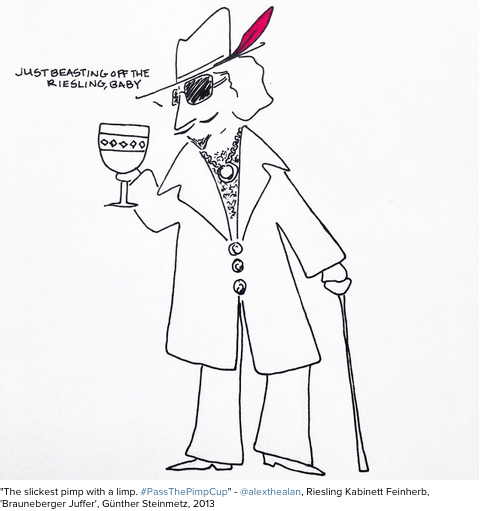
Welcome back to Restaurant Confessionals, where we talk to the unheard voices of the restaurant industry from both the front-of-house (FOH) and back-of-house (BOH) about what really goes on behind the scenes at your favorite establishments.
I was a line cook from age 15 to 22, working for free when I was still in high school. Was I a great cook? No. But could I hack it in any kitchen? Yeah, I think I could have been a line cook anywhere.
I came to New York and I had a job all lined up: I was suppose to go work for a chef who was running a four-star New York Times, three-star Michelin restaurant—Christian Delouvrier from Lespinasse at the St. Regis Hotel. He asked me to come help him open a restaurant in the Meatpacking District, right when it was really starting to pop; I was going to be his right-hand guy, and I was so excited. And then the restaurant never opened.
READ MORE: Restaurant Confessionals
I had moved to New York without any other job prospects, and I didn’t know what I was going to do. I started looking at line cook jobs, but they were only paying minimum wage, which was about $7 per hour around then. It would barely cover my rent.
So, I had to find a waitstaff job—something I’d never done before. I called everyone I knew and lied my way through interviews for different waitstaff jobs. The first job I ended up getting was at Oceana, a three-star New York Times fine-dining restaurant in Midtown: suit and tie, big wine list—you know the kind. I managed to lie my way into a job as a back waiter there—a waiter’s assistant.
And I was just not good at it—at all. I didn’t know how to move in a dining room, didn’t know how to carry a tray, didn’t know how to put down wine glasses, didn’t know how to set a table. I didn’t know how to crumb a table, how to speak eloquently about wine—all those little things that you need to know as a fine-dining waiter. I was just absolutely terrible.
The front-of-house manager quickly came to realize that I was faking it and demoted me. I started out as a back waiter—which is basically the number two in the dining room—and then they had me do bus boy stuff. Well, I didn’t really do that very well either, so then I got demoted to running food. And I didn’t do that very well either, so then I got demoted again to polishing glasses. From back waiter to glass polisher, all in the span of two or three weeks. Frankly, they were being very generous. They just didn’t give up on me—I don’t know why.
One night, I was bringing up this big oval tray with probably 30 or 40 glasses on it. I was behind someone, so I said, “Behind!” But I didn’t say it loud enough, so the guy popped up and I dropped all the glasses. And these were nice glasses: They probably cost $15-20 each, so you’re looking at $700-1,000 in broken glasses. The manager just went, “Yeah, this isn’t working out.” And I was like, “I understand.” So, I got let go.
After that, I was fired from a bunch of front-of-house positions. It’s like not being able to play baseball and starting in the major leagues. I got let go from my first seven jobs because I just lied my way in. Like, “Oh, you’ve worked at that restaurant?” And they’d just take it like that—I’m convincing. What did I say? Anything to get a job.
I picked things up along the way. After a while, I went from switching jobs every week to every month, and now I’m at three or four years per spot. Growing pains. I ended up as a manager for a Danny Meyer restaurant, and I learned all about hospitality and his philosophies about taking care of the employee so they can take care of the guest. I worked there for two years before I went to help open a small restaurant that ended up not being very successful. After that, I worked as a floor manager at a Mario Batali restaurant. (I always wanted to work at one of his joints because he’s got great restaurants and is a great operator.) Then a friend of mine recommended me for a Japanese joint—we doubled the revenue between years four and seven—and now I’m the general manager at a thriving LA spot.
My job is to find and fix problems all the time—and there’s always problems. They might be big or small: two guys getting in a fight at a bar; someone’s drunk and doesn’t want to pay their bill; an employee showed up drunk; something’s over- or undercooked. Everyone always thinks it’s just a business and you’ve got to make money and that’s all we’re concerned about. But my primary concern when someone comes my restaurant is that they enjoy themselves and have such a great time that they’re going to tell all their friends and they have no choice but to come back.
I’d say anything I could to get a job, so when I’m interviewing people here I know they’re thinking the same thing. And I understand it! So, I try and ask them questions about how they would handle certain situations. What’s your knowledge base? You say you have good wine knowledge? I would not describe my wine knowledge as “good,” but I bet it’s better than your “good.” You can tell kind of quickly when you’re talking to someone if they have it or not.
The best waiters never started out as waiters. I believe in promoting people from one position to another, because something as simple as carrying a tray of glasses is very valuable. How do you carry a glass? Is it clean? How many can you carry with two hands? That’s where we start—polishing glassware and silverware.
Thomas Keller talks about how his mom use to clean bathrooms. You’ll see him at the French Laundry, sweeping the floor. He owns the restaurant and is one of the most important chefs in America, but he still cleans.
Same thing here. I want our staff to have that attention to detail. A lot of people who come in here are a little bit younger, and they start at the bottom. After doing that for a while, you realize, I know how to carry a tray and I know how to polish glassware and I know what’s clean and not clean. And then you get to become a back waiter, and you have to learn to set up a table. And then you become a food runner and you learn what the food is—and then you become a waiter.
The best waiters in my restaurant all started out as back waiters—all of them. They aren’t going to disrespect their back waiters because they use to be one of them.





